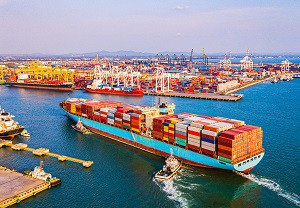
Customs Declarations and Clearing
Duration: 1 hour
Price: R99.00
This is part of a series
Read more about seriesCustoms Declarations and Clearing
Presenters : Sipho Mhaga
This webinar on demand is part of a series of webinars. Click here to read more
Overview
The customs declaration and clearance process are a pivotal part of customs compliance, making it critical for importers and exporters to ensure a high level of attention to their cross-border operations. This topic integrates other customs subjects covered in previous webinars, such as product classification, Rules of Origin, customs valuation, and import and export controls, into a key phase of customs compliance. Importers and exporters engage various stakeholders, including service providers, throughout the value chain to deliver products to their final destination. It is essential to identify the factors and steps for efficient and compliant declaration and clearance processes.
Understanding the sequential actions requiring attention throughout the value chain is necessary. Tax professionals working with customs should be able to draft cross-border manuals, simple flowcharts, and service level agreements (SLAs) with involved stakeholders. Additionally, creating document/information checklists for employee reference and knowing when to obtain a customs health-check is crucial for high-level compliance and smooth, seamless clearances.
Video Content
-
Purpose of Customs Clearance
-
The Customs Clearing Process
-
Registration Requirements
-
Customs Declaration forms/docs Submissions
-
Clearing Instructions
-
Other Tax Jurisdictions (for reference and comparison)
Competencies Developed
-
Link customs clearance declarations seamlessly to other customs cornerstones such as Product Classification, Rules of Origin, Customs Valuation, and Import & Export Controls for effective cross-border operations and compliance.
-
Identify key factors within the business that assist in efficient and compliant declaration and clearing processes.
-
Gain an understanding of other actions requiring attention throughout the value chain.
-
Draft cross-border manuals and simple flowcharts and prepare service level agreements (SLAs) with stakeholders.
-
Create document/information checklists for employees to refer to in performing their daily duties.
